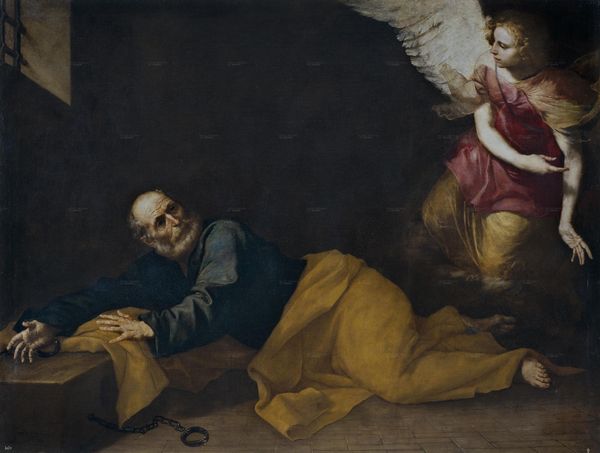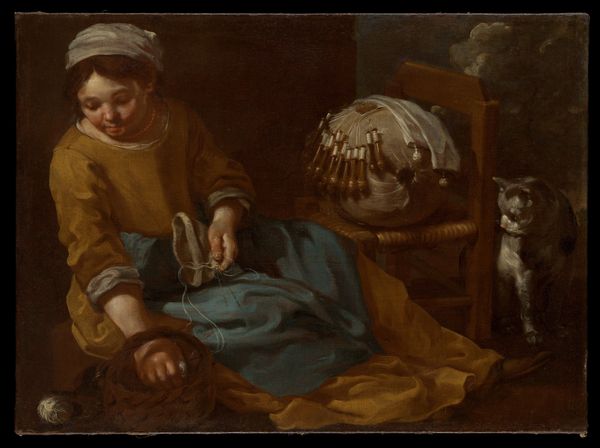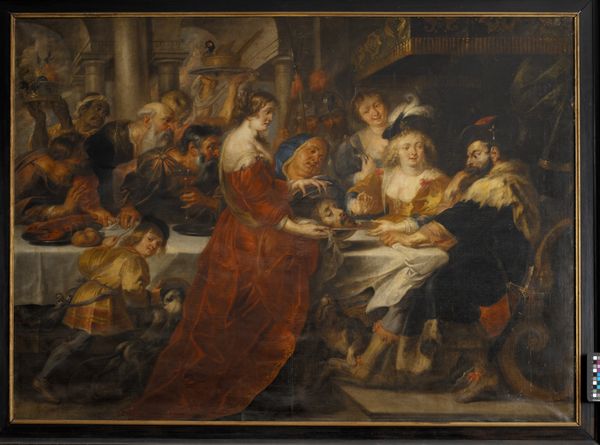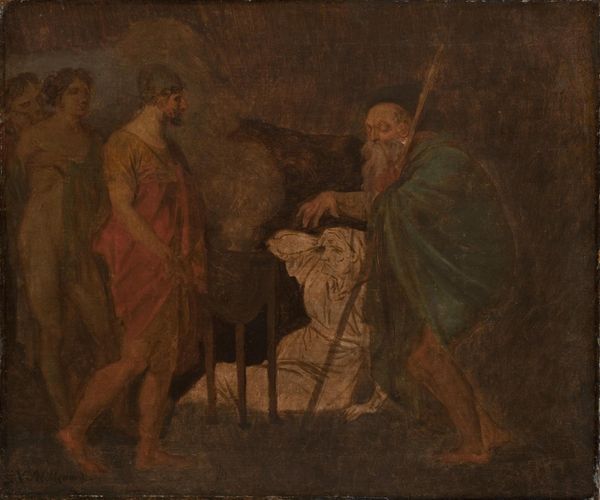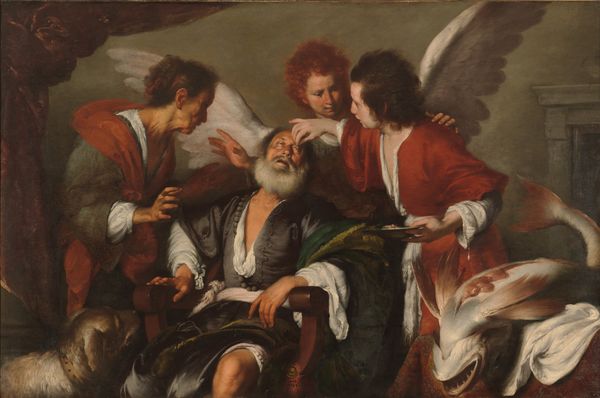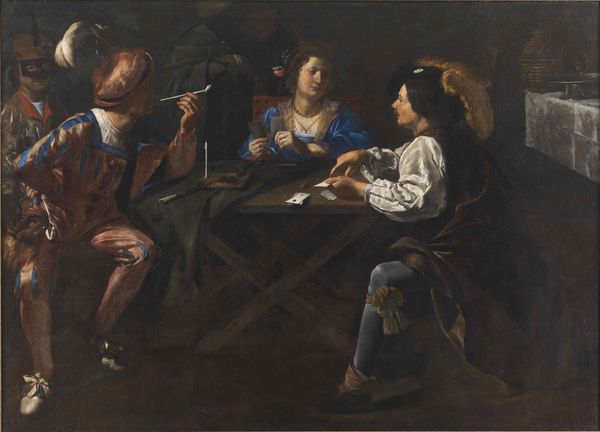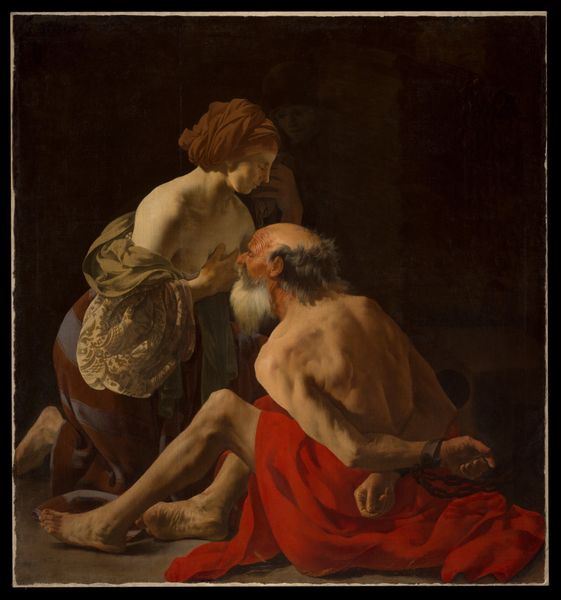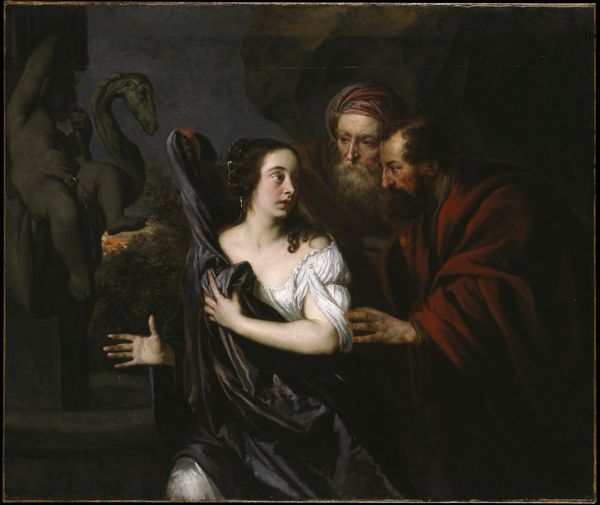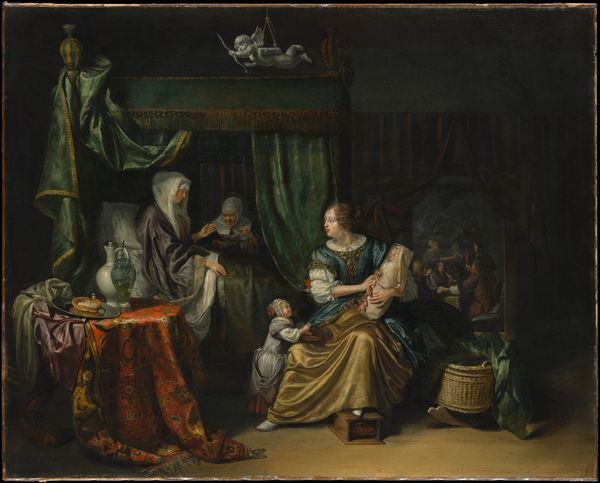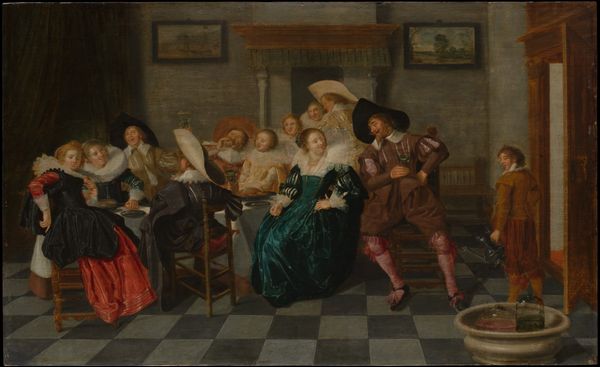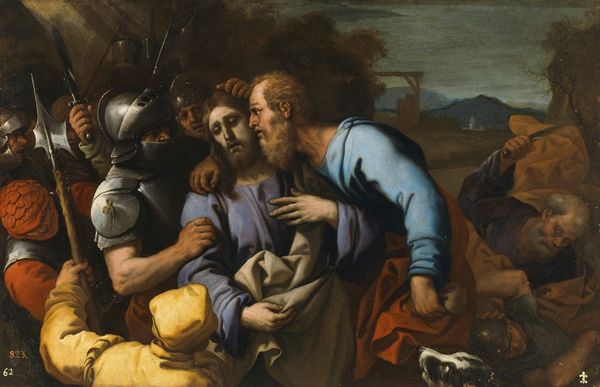
oil-paint
#
portrait
#
allegory
#
baroque
#
oil-paint
#
figuration
#
oil painting
#
earthy tone
#
underpainting
#
painting painterly
#
genre-painting
#
history-painting
#
charcoal
Dimensions: support height 124 cm, support width 160.7 cm, outer size depth 8 cm
Copyright: Rijks Museum: Open Domain
Curator: Here we have Paulus Moreelse's oil painting, "Esau Selling His Birthright," created sometime after 1609. I find myself immediately drawn to the pervasive darkness; a sense of fateful consequence hangs heavily in the air. Editor: Indeed, a rather somber affair visually. The artist has layered the paint quite deliberately, achieving an effect that evokes raw materiality. Notice how the textures—especially within the draped fabrics—create dimension and richness. One wonders, given Moreelse’s studio practices, whether this was achieved by multiple hands? Curator: Absolutely. Beyond the technical construction, it strikes me how potently Moreelse uses symbolic gestures. The exchange of the bowl and the clasped hands communicate the irrevocable nature of the transaction. Esau's downturned gaze suggests regret. Editor: Regret, perhaps, but also the sheer material exchange. It's fascinating to consider what such a birthright actually signified in economic terms in that historical context. We aren’t dealing only in familial tradition or abstract promise; this is inheritance as resource, as labor. The figures themselves are arranged around the table with a distinct feeling of labor and productivity, their work ethic compromised. Curator: I'd argue the context resonates even deeper. Think of the cultural and religious implications! Esau's birthright was, biblically, tied to lineage and destiny. Selling it wasn't just a material loss, but a profound spiritual forfeiture with cultural repercussions. That symbolism is clearly intended and expertly visualized with somber clarity. Editor: Yet, to return to that very material reality, consider the audience for whom Moreelse produced this. Patrons were engaging with an image that resonated both the religious significance as well as commentary on the evolving economies of inheritance, right? What were the labor practices of these patrons in relation to the birthright and other social dynamics being represented in the image? It prompts further questions of exploitation through different material realities. Curator: A fascinating angle indeed, thinking of patronage as an economy itself. It provides yet another rich perspective to appreciate this moment frozen in time. I notice even on closer inspection the figures in the background, barely lit—are those perhaps Isaac and Rebecca looking on at the fateful deal? Editor: Yes, that very small detail offers another complex angle. The way this artwork captures tangible themes in soft textures of color, indeed allows the viewer to perceive this moment of great importance in various profound depths. Curator: A rewarding and thoughtful reading, I'll say!
Comments
No comments
Be the first to comment and join the conversation on the ultimate creative platform.
